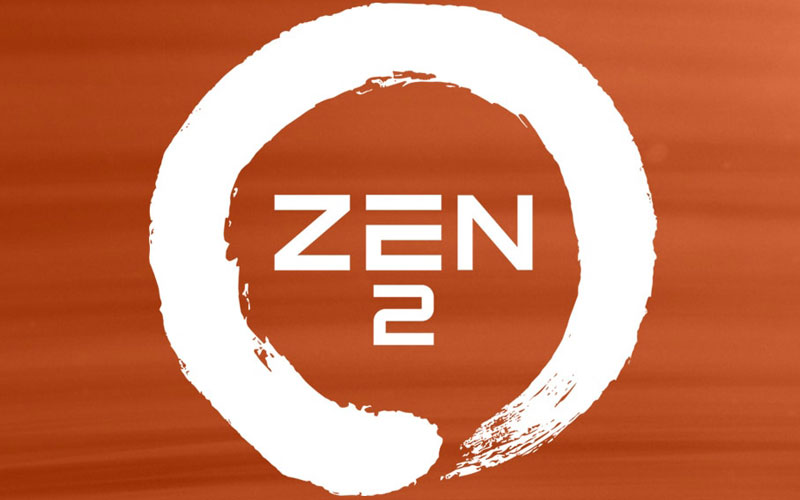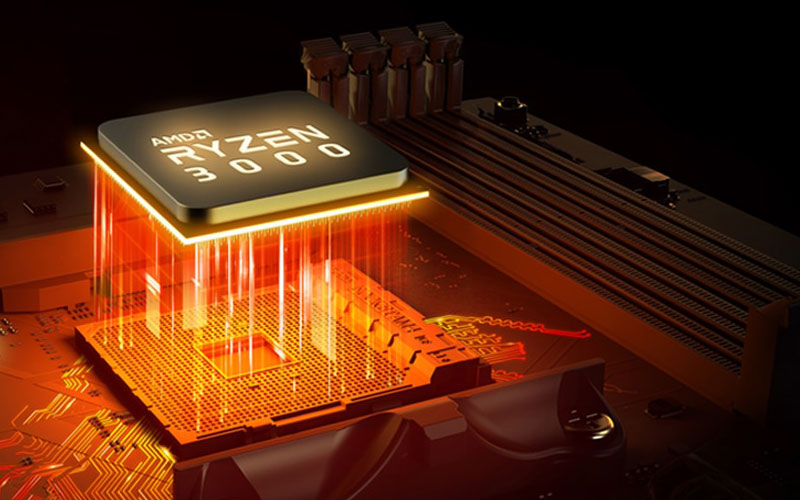Very very good
A good processor in all with him the multitasking takes another dimension.
However it heats up so plan on efficient cooling for the cpu.
It is particularly efficient in 3d rendering
The AMD Ryzen 9 3950X processor (3.5 GHz / 4.7 GHz) is one of the first PC processors to be etched in 7 nm and to support the PCIe 4.0 interface. The third-generation Ryzen, codenamed Matisse, impresses with 16 cores and 32 threads, a base frequency of 3.5 GHz and up to 4.7 GHz, 64 MB L3 cache and 105W TDP. With no fan, you have the freedom to choose your cooling solution, whether it's watercooling or a conventional fan.
AMD's Ryzen 9 3950X offers a (re)introduction to high-end performance for gaming, content creation and intensive multitasking. With its 32 threads and 70 MB GameCache , you can do EVERYTHING faster and smoother.

Zen 2 cores are designed to make efficient use of available resources to optimise computational performance. Compared to the previous architecture, 2X floating point capabilities and up to 15% higher instructions per cycle enable performance to reach new thresholds. Zen 2 combines performance for next-generation applications with optimal energy efficiency.
The AMD Ryzen 9 3950X desktop processor offers 16 native and 32 logical cores for smooth multitasking. Thanks to its high native frequency and its Turbo Core mode, the third-generation AMD Ryzen CPU delivers exceptional performance in gaming, intensive multitasking, video editing, 3D modeling and more. The 64MB L3 cache also enables ultra-fast processing of large numbers of instructions with low latency.

 Select your criteria
Select your criteria
General information |
Product name |
AMD Ryzen 9 3950X (3.5 GHz / 4.7 GHz) |
Brand |
AMD | |
Model |
100-100000051WOF | |
Main characteristics |
Processor model |
AMD Ryzen 9 |
Processor support |
AMD AM4 | |
CPU frequency |
3.5 GHz | |
Frequency in Turbo mode |
4.7 GHz | |
Number of cores |
16 | |
Number of threads |
32 | |
Platform (processor) |
AMD Zen 2 | |
Architecture |
Core name |
Matisse |
Engraving fineness |
7 nm | |
TDP |
105 W | |
L2 cache |
6 MB | |
L3 cache |
64 MB | |
Motherboard chipset compatibility |
AMD A320 | |
| AMD A520 | ||
| AMD B350 | ||
| AMD B450 | ||
| AMD B550 | ||
| AMD X370 | ||
| AMD X470 | ||
| AMD X570 | ||
Graphics chipset |
Graphics chipset |
None |
Memory controller |
Memory controller |
DDR4 |
Memory controller type |
Dual Channel | |
Memory Frequency(ies) |
DDR4 2133 MHz | |
| DDR4 2400 MHz | ||
| DDR4 2666 MHz | ||
| DDR4 2933 MHz | ||
| DDR4 3200 MHz | ||
Advanced technologies |
Virtualization |
AMD Virtualization (AMD-V) |
| AMD-Vi | ||
Packaging |
Typical use |
Desktop computer |
Gamer |
Yes | |
Box version |
Yes | |
Fan supplied |
No | |
Warranties |
Commercial warranty |
Seller 2 years |
Legal warranty |
See terms & conditions |
See all AMD products
Product referenced on 25 Nov 2019
A good processor in all with him the multitasking takes another dimension.
However it heats up so plan on efficient cooling for the cpu.
It is particularly efficient in 3d rendering
Used for 3D rendering and games, the performance is very good, as you can imagine with its 16 cores and 32 threads.
In terms of temperature, either with a Corsair h115i pro or with a Noctua NH-D15S mounted with two fans, the temperatures under load are quite similar, around +55/+60 °C compared to the ambient during rendering (100% all-core).
The AIO allows to gain 2-3 degrees and therefore a few MHz of Precision Boost (~50 to 75 MHz in my case), but the water temperature hardly decreases, expect more noise.
As far as boost is concerned, don't hesitate to activate PBO if the motherboard is solid enough, the performance gain, although slight, is nevertheless real, especially under all-core load.
The theoretical maximum frequencies are however rarely reached (I get 4600, sometimes 4650, but I have only seen 4700 once on a core) in real use, in normal use I get 4500-4550, and all-core 4000-4100 depending on the load.
(it may be that custom water cooling helps to increase this performance)
The direct CPUSSD NVMe link (on most motherboards) is also a bonus in terms of I/O performance.
Provide 3600MHz memory (recommended by AMD, for FCLK/Infinity fabric at 1800Mhz which is the expected stable maximum) with as low CAS as possible to optimise performance, there is a relatively large impact unlike Intel architecture which is less sensitive to it.
Finally, I take one star off for the high price (if you do the price per core ratio you can see that the price per core is higher than for say the 3900X), to which the binning (selection of chips by quality) is perhaps not for nothing.